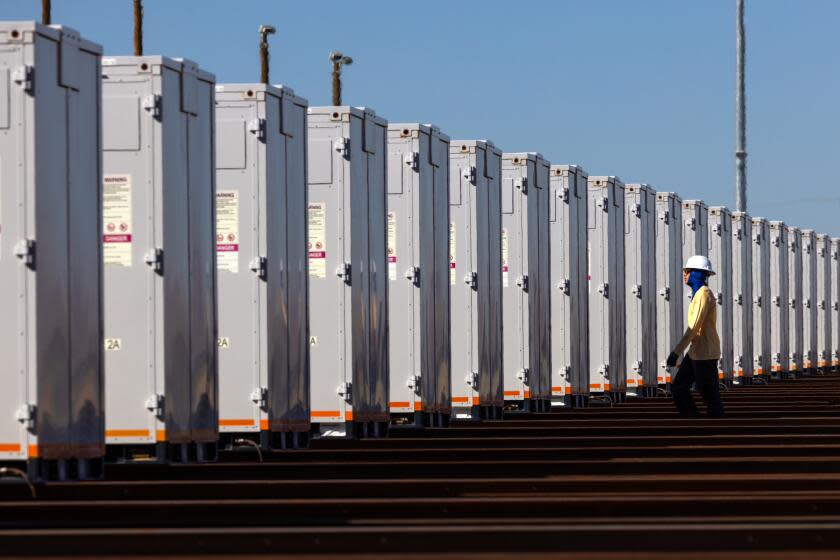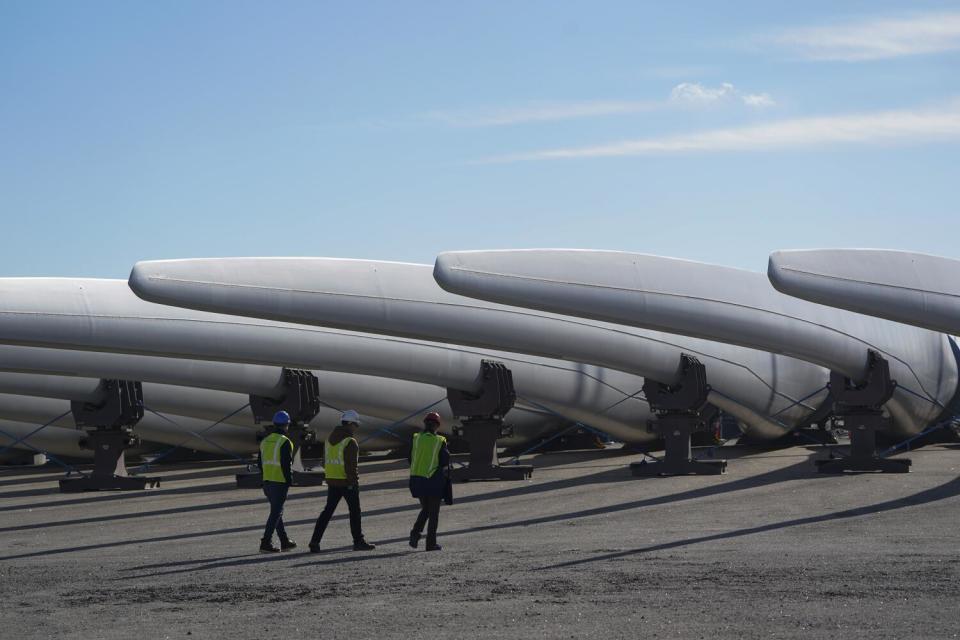As Earth warms, California gets federal funding to train climate-ready workforce

California is among nine U.S. states and territories selected to receive $60 million in federal funding as part of a significant effort to build a nationwide climate-ready workforce.
The investment from the U.S. Department of Commerce and the National Oceanic and Atmospheric Administration will support job development efforts in coastal and Great Lakes communities around the country, including $9.5 million to establish the Los Angeles County Climate Ready Employment Council at Long Beach City College.
The LBCC program will help develop training, internship and job placement services for occupations in the water and solar sectors that are demanding workers, officials said. Similar programs were announced Tuesday in American Samoa, Alaska, Washington, Texas, Louisiana, Massachusetts, Ohio and Puerto Rico and the U.S. Virgin Islands.
The investment in public, private and educational organizations "will train workers from around our coasts and help them find good-paying jobs that strengthen climate resilience and local economies," read a statement from U.S. Secretary of Commerce Gina Raimondo. "Climate change accelerates the need for a new generation of skilled workers who can help communities address a wide range of climate impacts including sea level rise, flooding, water quality issues and the need for solutions such as renewable energy."
The program is funded by President Biden's landmark Inflation Reduction Act and includes $50 million in direct awards and $10 million in technical assistance to support the grantees. Federal officials told reporters they received 95 applications for the program requesting a total of $615 million in funding — or more than 10 times the amount available.
"Even with this generational investment that's being made, we think it shows the need and the demand in communities nationwide for programs like this," said Jonathan Pennock, director of NOAA's National Sea Grant College Program, which is helping to manage the initiative.
Read more: Feds award $1 billion to plant trees, combat extreme heat, including $100 million for California
The program arrives at a key moment for the country, which is continuing to experience worsening climate impacts such as extreme wildfires, floods, heat and storms. Las Vegas, Phoenix and Albuquerque are currently sweltering amid a record-breaking heat wave while portions of Florida are bracing to receive a month's worth of rain in just a few days.
California has set ambitious targets for adapting to climate change, including cutting greenhouse gas emissions nearly in half by 2030 and achieving carbon neutrality by 2045, but to get there will require significant overhauls of its transportation and energy sectors, as well as upgrades and investments in manufacturing and infrastructure.
A 2021 study on California's clean energy transition found that the investments needed to meet and strengthen the state's goals could create 1 million new jobs through 2030. About 14% of those jobs are related to solar, 5% to onshore wind and 4% to wastewater, among other sectors.
Such efforts are urgently needed: In the 1980s, the U.S. averaged a billion-dollar weather disaster every four months, according to NOAA. Today, such events happen once every three weeks.

"It's a stark reminder of the escalating risks we're up against," said Jainey Bavishi, assistant secretary of commerce for oceans and atmosphere and a deputy NOAA administrator. "The demand for adaptation and resilience solutions is increasing, and with that comes an increasing demand for a climate-ready workforce that's trained to help communities and businesses prepare for the effects of climate change."
Bavishi noted that since 2018, the number of city- and state-level climate adaptation plans have risen by 32%, "but translating those into action fairly and effectively is proving to be tougher." One barrier is the lack of a diverse skilled workforce, she said.
What's more, the Fifth National Climate Change Assessment, released in November, underscored the ways in which historically underserved communities, communities of color, and tribal and indigenous communities face disproportionate risks and impacts from climate change. The same communities are often on the sidelines of the labor market as well.
The workforce initiative is intentionally reaching out to those communities with the training opportunities, Raimondo told reporters Tuesday. Support services — such as child care and transportation — are components of the initiative that will help ensure that "folks can finish the training, graduate and actually get high quality, good paying jobs."
"We have to be clear-eyed about the need to prepare workers with skills for the jobs and connections to real jobs, and that's what this initiative is designed to do," she said.
Read more: Earth breaks heat and CO₂ records once again: 'Our planet is trying to tell us something'
The $9.5 million program at Long Beach City College represents the second-largest investment, following only the Greater Boston Coastal Resilience Jobs Alliance in Massachusetts, which will receive $9.8 million for a similar endeavor.
LBCC will serve as the "backbone" for the establishment of the Los Angeles County Climate Ready Employment Council — an expansive project that will convene parties from the public, private, nonprofit, tribal and educational spheres to improve the county's climate resiliency workforce and develop training and job placement in all sectors across the county, college officials said.
"Although climate change repercussions may be inevitable, we still hold the power to lessen the severity of the outcomes by changing both our collective behavior and infrastructure," read a statement from LBCC superintendent-president Mike Muñoz. "Our students will be at the forefront of developing and implementing innovative solutions that are essential for sustaining our planet’s health and ensuring a resilient future for all."
LBCC this week also announced a $750,000 grant from the California Municipal Utilities Assn.'s water, wastewater and energy workforce development program. Both grants will "address the unique needs of those communities most disproportionately impacted by climate change and will connect underserved and under-resourced workers with training and job placement in climate-resilient careers," school officials said.
The federal program will begin six to nine months after the funds are received, according to the college. NOAA officials said they aim to disperse all funds to awardees by Aug. 1.
The Biden administration has already created more than 270,000 clean energy jobs across the country, but officials underscored that there is still more work to be done.
"The impacts of the climate crisis are diverse, and the skills needed to empower workers and communities are also diverse," Raimondo said. "If we're going to ensure that American workers can take advantage of the jobs that we're creating by tackling climate change, then we have to be proactive about training folks so they have the skills they need to get the jobs that are available."
This story originally appeared in Los Angeles Times.


